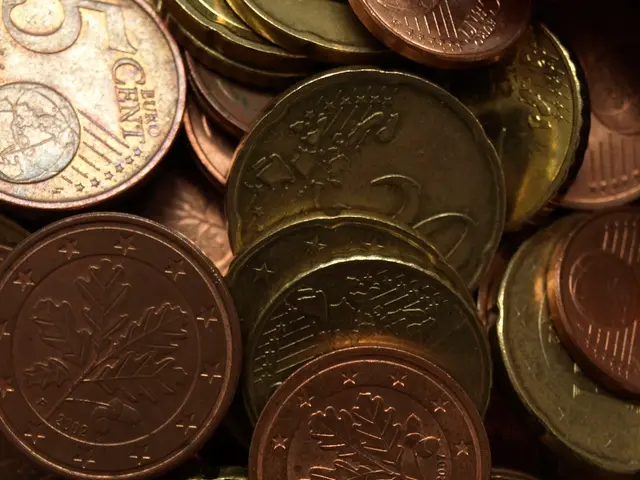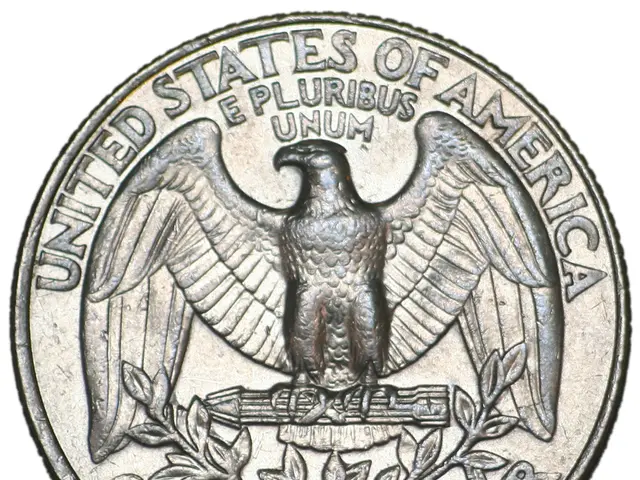Germans experience a financial loss of 79 billion over a span of three years.
In the current economic climate of low-interest rates and rising inflation, German savers are facing a tough reality. A significant portion of the country's money assets, approximately a third, is made up of cash and sight deposits, which offer minimal returns and struggle to keep pace with inflation.
According to recent data, the inflation rate in Germany rose by 0.5 percent to 2.5 percent in May 2021 and remained at a high level of 2.3 percent in June. This inflation erodes the purchasing power of savings, particularly those heavily dependent on interest rates.
However, experts like Giovanni Gay, CEO of Union Investment, suggest that German savers can adopt a diversified investment strategy to mitigate these challenges. This approach involves focusing on assets that outpace inflation and provide a buffer against low-interest rates, such as equities, inflation-protected securities, and precious metals.
Equities, particularly in strong German companies, are one such investment. Despite low economic growth, large German firms are optimistic and committing to major investments in manufacturing, R&D, and infrastructure. This potential for capital appreciation and dividends can help offset inflation erosion.
Inflation-hedged bonds and safe government bonds also play a crucial role in a diversified portfolio. While German bonds remain a favoured safe-haven, allocating to inflation-indexed bonds or short-duration bonds can protect against rising inflation or interest rate volatility.
Precious metals, such as gold, can act as a hedge during uncertain periods, preserving purchasing power when inflation expectations deviate or geopolitical risks materialize.
Avoiding reliance on traditional savings accounts or low-yield fixed income is another key strategy. Given current low interest rates in Germany, these instruments do not keep pace with inflation and erode purchasing power over time.
Considering global diversification may also be beneficial, particularly for savers open to currency and market risk. U.S. technology stocks and high-yield assets have shown resilience and inflation protection potential for investors with dollar exposure.
In summary, a balanced, diversified approach that combines equities with inflation-protected bonds and alternative hedges like precious metals is recommended. This strategy aligns with current macroeconomic conditions and corporate investment optimism in Germany.
However, higher savings rates do not necessarily lead to higher yields in a low-interest environment. Investors must invest more efficiently and profitably for their savings efforts to pay off. This is a growing trend, with an increasing number of investors focusing on returns rather than just parking their money in less profitable assets.
Despite this shift, more than 40% of total financial assets are still invested in less profitable assets. This highlights the need for education and awareness about the importance of a diversified investment strategy in the current economic climate.
According to Giovanni Gay, Germans are saving a lot but inefficiently. The share of investment funds in total financial assets remained constant at 10.5% compared to the previous year, indicating a potential opportunity for growth in this area.
In 2020, German savers parked around two trillion euros in cash on checking or savings accounts, over 229 billion euros more than the previous year. This large sum of sight deposits has a real interest rate (interest rate after deducting the inflation rate) that has been negative for almost 20 years.
As a result, savers lost around 79 billion euros in purchasing power between 2017 and 2020 due to low interest rates. This underscores the need for a proactive, well-informed approach to saving and investing.
In conclusion, the current economic climate presents challenges for German savers, but a diversified investment strategy can help mitigate these challenges and ensure the purchasing power of savings is preserved.
Other investment options, such as equities and precious metals, could potentially outpace inflation and offer higher returns in the current economic climate. Personal-finance experts suggest focusing on assets that can provide a buffer against low-interest rates and inflation.
In order to efficiently generate returns, it's crucial for German savers to adopt a diversified investment strategy and invest more in assets like investment funds, which can help prevent erosion of purchasing power due to inflation and low-interest rates.




